LG Electronics 26.2 cu. ft. French Door Smart Refrigerator with Wi-Fi Enabled in Black Stainless Steel
Store more food with an Ultra-Large Capacity refrigerator. Fingerprint resistant finish & Slim SpacePlus ice door system. Smart Home & Wi-Fi enabled to operate & troubleshoot on phone app.
Now you can keep your refrigerator organized instead of just wishing you could. With 26 cu. ft. to work with, you get lots of great space and two ice makers to keep plenty of ice on hand for the family reunion. Plus, our Smart Cooling technology is designed to help keep all your food fresher, longer.
-
Stock-up and store everything you need. With a cavernous 26 cu. ft. of space, this LG French Door refrigerator gives you ample space for all of your family’s favorite foods and keeps them conveniently organized and within reach.
- Dual ice makers, dispensed from the door and located in the freezer compartment, produce large amounts of ice so you never run out. This extra ice storage helps ensure that you have extra ice on hand for those hot summer days or when entertaining large parties
- From making extra ice for tonight’s dinner party while you’re at work to adjusting temperatures with simple voice commands, LG refrigerators with SmartThinQ technology will change the way you think and the way you live. Simply download the free LG SmartThinQ app to your Android or iOS device and let the possibilities unfold. Receive notifications on your smartphone when the door is open or your water filter needs to be replaced. Control refrigerator and freezer temperatures remotely. Diagnose issues and get quick, expert advice.
- Ice makers are great, but not if it means you can’t fit all of your food in the fridge. The Slim SpacePlus Ice System provides the most shelf space and allows even more space for door bins.
- Smart Cooling system is designed to maintain superior conditions within the refrigerator. The Linear Compressor reacts quickly to temperature fluctuations and helps keep your food fresher, longer. Meanwhile, strategically-placed vents in every section help to surround your food with cool air no matter where you put it.
- From pitchers to pint glasses, finally an ice and water dispenser that can accommodate just about any container. The water and ice dispenser in this LG 4-Door refrigerator is one of the tallest around, measuring in at an ultra-accommodating 12.6 in.
- 2-Tier Organization Freezer 2-Tier Organization Freezer
- SmartDiagnosis helps the service center diagnose problems over the phone, helping you troubleshoot quickly.
- Two humidity-controlled crisper drawers, a full-width Glide-N-Serve drawer, and a bonus drawer for fruits and vegetables make party preparations easy.
- This ENERGY STAR qualified LG refrigerator exceeds federal energy standards to positively impact your energy bill, your energy consumption, and most importantly, the environment.
- When you buy a refrigerator, you don’t want to worry that it won’t last. Because the Linear Compressor motor uses fewer moving parts and operates more efficiently, LG confidently backs the motor with a 10-year limited warranty.
- Use the voice-activated features of Google Assistant or Amazon Alexa. LG makes it easy to keep your cool in any situation. Let the advantages of smart technology work for you.
Additional information
| Depth (Excluding Handles) | 32.38 |
|---|---|
| Depth (Including Handles) | 34.88 |
| Depth (Less Door) | 28.5 |
| Depth With Door Open 90 Degrees (In) | 47.125 |
| Height to Top of Door Hinge (in.) | 69.75 |
| Height to Top of Refrigerator (in.) | 68.38 |
| Product Depth x Height x Width (in.) | 34.88 x 68.38 x 35.75 |
| Refrigerator Width (In.) | 35.75 |
| Certifications and Listings | UL Listed |
| Manufacturer Warranty | 1 Year Parts & Labor, 5 Years Sealed System, 5 Years Compressor, 10 Years Linear Compressor Parts Only |
2 (two) is a number, numeral and digit. It is the natural number following 1 and preceding 3. It is the smallest and only even prime number. Because it forms the basis of a duality, it has religious and spiritual significance in many cultures.
26 may refer to:
- 26 (number), the natural number following 25 and preceding 27
- one of the years 26 BC, AD 26, 1926, 2026
Black is a color that results from the absence or complete absorption of visible light. It is an achromatic color, without hue, like white and grey. It is often used symbolically or figuratively to represent darkness. In Western society, black and white have often been used to describe opposites such as good and evil, the Dark Ages versus Age of Enlightenment, and night versus day. In Western society, since the Middle Ages, black has been the symbolic color of solemnity and authority, and for this reason it is still commonly worn by judges and magistrates.
Black was one of the first colors used by artists in Neolithic cave paintings. It was used in ancient Egypt and Greece as the color of the underworld. In Ancient Egypt, black had positive associations; being the color of fertility and the rich black soil flooded by the Nile. In the Roman Empire, it became the color of mourning, and over the centuries it was frequently associated with death, evil, witches, and magic. In the 14th century, it was worn by royalty, clergy, judges, and government officials in much of Europe. It became the color worn by English romantic poets, businessmen and statesmen in the 19th century, and a high fashion color in the 20th century. According to surveys in Europe and North America, it is the color most commonly associated with mourning, the end, secrets, magic, force, violence, fear, evil, and elegance.
Black is the most common ink color used for printing books, newspapers and documents, as it provides the highest contrast with white paper and thus is the easiest color to read. Similarly, black text on a white screen is the most common format used on computer screens. As of September 2019, the darkest material is made by MIT engineers from vertically aligned carbon nanotubes.
A door is a hinged or otherwise movable barrier that allows ingress (entry) into and egress (exit) from an enclosure. The created opening in the wall is a doorway or portal. A door's essential and primary purpose is to provide security by controlling access to the doorway (portal). Conventionally, it is a panel that fits into the doorway of a building, room, or vehicle. Doors are generally made of a material suited to the door's task. They are commonly attached by hinges, but can move by other means, such as slides or counterbalancing.
The door may be able to move in various ways (at angles away from the doorway/portal, by sliding on a plane parallel to the frame, by folding in angles on a parallel plane, or by spinning along an axis at the center of the frame) to allow or prevent ingress or egress. In most cases, a door's interior matches its exterior side. But in other cases (e.g., a vehicle door) the two sides are radically different.
Many doors incorporate locking mechanisms to ensure that only some people can open them (such as with a key). Doors may have devices such as knockers or doorbells by which people outside announce their presence. (In some countries, such as Brazil, it is customary to clap from the sidewalk to announce one's presence.) Apart from providing access into and out of a space, doors may have the secondary functions of ensuring privacy by preventing unwanted attention from outsiders, of separating areas with different functions, of allowing light to pass into and out of a space, of controlling ventilation or air drafts so that interiors may be more effectively heated or cooled, of dampening noise, and of blocking the spread of fire.
Doors can have aesthetic, symbolic, ritualistic purposes. Receiving the key to a door can signify a change in status from outsider to insider. Doors and doorways frequently appear in literature and the arts with metaphorical or allegorical import as a portent of change.
Electronics is a scientific and engineering discipline that studies and applies the principles of physics to design, create, and operate devices that manipulate electrons and other electrically charged particles. Electronics is a subfield of electrical engineering which uses active devices such as transistors, diodes, and integrated circuits to control and amplify the flow of electric current and to convert it from one form to another, such as from alternating current (AC) to direct current (DC) or from analog signals to digital signals.
Electronic devices have hugely influenced the development of many aspects of modern society, such as telecommunications, entertainment, education, health care, industry, and security. The main driving force behind the advancement of electronics is the semiconductor industry, which in response to global demand continually produces ever-more sophisticated electronic devices and circuits. The semiconductor industry is one of the largest and most profitable sectors in the global economy, with annual revenues exceeding $481 billion in 2018. The electronics industry also encompasses other sectors that rely on electronic devices and systems, such as e-commerce, which generated over $29 trillion in online sales in 2017.
French may refer to:
- Something of, from, or related to France
- French language, which originated in France
- French people, a nation and ethnic group
- French cuisine, cooking traditions and practices
LG Corporation (or LG Group), formerly known as Lucky-Goldstar, is a South Korean multinational conglomerate founded by Koo In-hwoi and managed by successive generations of his family. It is the fourth-largest chaebol (family-run conglomerate) in South Korea. Its headquarters are in the LG Twin Towers building in Yeouido-dong, Yeongdeungpo District, Seoul. LG makes electronics, chemicals, household appliances, and telecommunications products and operates subsidiaries such as LG Electronics, Zenith, LG Display, LG Uplus, LG Innotek, LG Chem, and LG Energy Solution in over 80 countries.
A refrigerator, colloquially fridge, is a commercial and home appliance consisting of a thermally insulated compartment and a heat pump (mechanical, electronic or chemical) that transfers heat from its inside to its external environment so that its inside is cooled to a temperature below the room temperature. Refrigeration is an essential food storage technique around the world. The low temperature lowers the reproduction rate of bacteria, so the refrigerator reduces the rate of spoilage. A refrigerator maintains a temperature a few degrees above the freezing point of water. The optimal temperature range for perishable food storage is 3 to 5 °C (37 to 41 °F). A similar device that maintains a temperature below the freezing point of water is called a freezer. The refrigerator replaced the icebox, which had been a common household appliance for almost a century and a half. The United States Food and Drug Administration recommends that the refrigerator be kept at or below 4 °C (40 °F) and that the freezer be regulated at −18 °C (0 °F).
The first cooling systems for food involved ice. Artificial refrigeration began in the mid-1750s, and developed in the early 1800s. In 1834, the first working vapor-compression refrigeration, using the same technology seen in air conditioners, system was built. The first commercial ice-making machine was invented in 1854. In 1913, refrigerators for home use were invented. In 1923 Frigidaire introduced the first self-contained unit. The introduction of Freon in the 1920s expanded the refrigerator market during the 1930s. Home freezers as separate compartments (larger than necessary just for ice cubes) were introduced in 1940. Frozen foods, previously a luxury item, became commonplace.
Freezer units are used in households as well as in industry and commerce. Commercial refrigerator and freezer units were in use for almost 40 years prior to the common home models. The freezer-over-refrigerator style had been the basic style since the 1940s, until modern, side-by-side refrigerators broke the trend. A vapor compression cycle is used in most household refrigerators, refrigerator–freezers and freezers. Newer refrigerators may include automatic defrosting, chilled water, and ice from a dispenser in the door.
Domestic refrigerators and freezers for food storage are made in a range of sizes. Among the smallest are Peltier-type refrigerators designed to chill beverages. A large domestic refrigerator stands as tall as a person and may be about one metre (3 ft 3 in) wide with a capacity of 0.6 m3 (21 cu ft). Refrigerators and freezers may be free standing, or built into a kitchen. The refrigerator allows the modern household to keep food fresh for longer than before. Freezers allow people to buy perishable food in bulk and eat it at leisure, and make bulk purchases.
Stainless may refer to:
- Cleanliness, or the quality of being clean
- Stainless steel, a corrosion-resistant metal alloy
- Stainless Games, a British video game developer
- Stainless Broadcasting Company, a TV broadcaster based in Michigan, US
- Stainless Banner, the second national flag of the Confederate States of America
Steel is an alloy of iron and carbon with improved strength and fracture resistance compared to other forms of iron. Because of its high tensile strength and low cost, steel is one of the most commonly manufactured materials in the world. Steel is used in buildings, as concrete reinforcing rods, in bridges, infrastructure, tools, ships, trains, cars, bicycles, machines, electrical appliances, furniture, and weapons.
Iron is always the main element in steel, but many other elements may be present or added. Stainless steels, which are resistant to corrosion and oxidation, typically need an additional 11% chromium.
Iron is the base metal of steel. Depending on the temperature, it can take two crystalline forms (allotropic forms): body-centred cubic and face-centred cubic. The interaction of the allotropes of iron with the alloying elements, primarily carbon, gives steel and cast iron their range of unique properties. In pure iron, the crystal structure has relatively little resistance to the iron atoms slipping past one another, and so pure iron is quite ductile, or soft and easily formed. In steel, small amounts of carbon, other elements, and inclusions within the iron act as hardening agents that prevent the movement of dislocations.
The carbon in typical steel alloys may contribute up to 2.14% of its weight. Varying the amount of carbon and many other alloying elements, as well as controlling their chemical and physical makeup in the final steel (either as solute elements, or as precipitated phases), impedes the movement of the dislocations that make pure iron ductile, and thus controls and enhances its qualities. These qualities include the hardness, quenching behaviour, need for annealing, tempering behaviour, yield strength, and tensile strength of the resulting steel. The increase in steel's strength compared to pure iron is possible only by reducing iron's ductility.
Steel was produced in bloomery furnaces for thousands of years, but its large-scale, industrial use began only after more efficient production methods were devised in the 17th century, with the introduction of the blast furnace and production of crucible steel. This was followed by the Bessemer process in England in the mid-19th century, and then by the open-hearth furnace. With the invention of the Bessemer process, a new era of mass-produced steel began. Mild steel replaced wrought iron. The German states were the major steel producers in Europe in the 19th century. American steel production was centered in Pittsburgh, Bethlehem, Pennsylvania, and Cleveland until the late 20th century.
Further refinements in the process, such as basic oxygen steelmaking (BOS), largely replaced earlier methods by further lowering the cost of production and increasing the quality of the final product. Today more than 1.6 billion tons of steel is produced annually. Modern steel is generally identified by various grades defined by assorted standards organizations. The modern steel industry is one of the largest manufacturing industries in the world, but also one of the most energy and greenhouse gas emission intense industries, contributing 8% of global emissions. However, steel is also very reusable: it is one of the world's most-recycled materials, with a recycling rate of over 60% globally.
With or WITH may refer to:
- With, a preposition in English
- Carl Johannes With (1877–1923), Danish doctor and arachnologist
- With (character), a character in D. N. Angel
- With (novel), a novel by Donald Harrington
- With (album), a 2014 album by TVXQ
- With (EP), a 2021 EP by Nam Woo-hyun

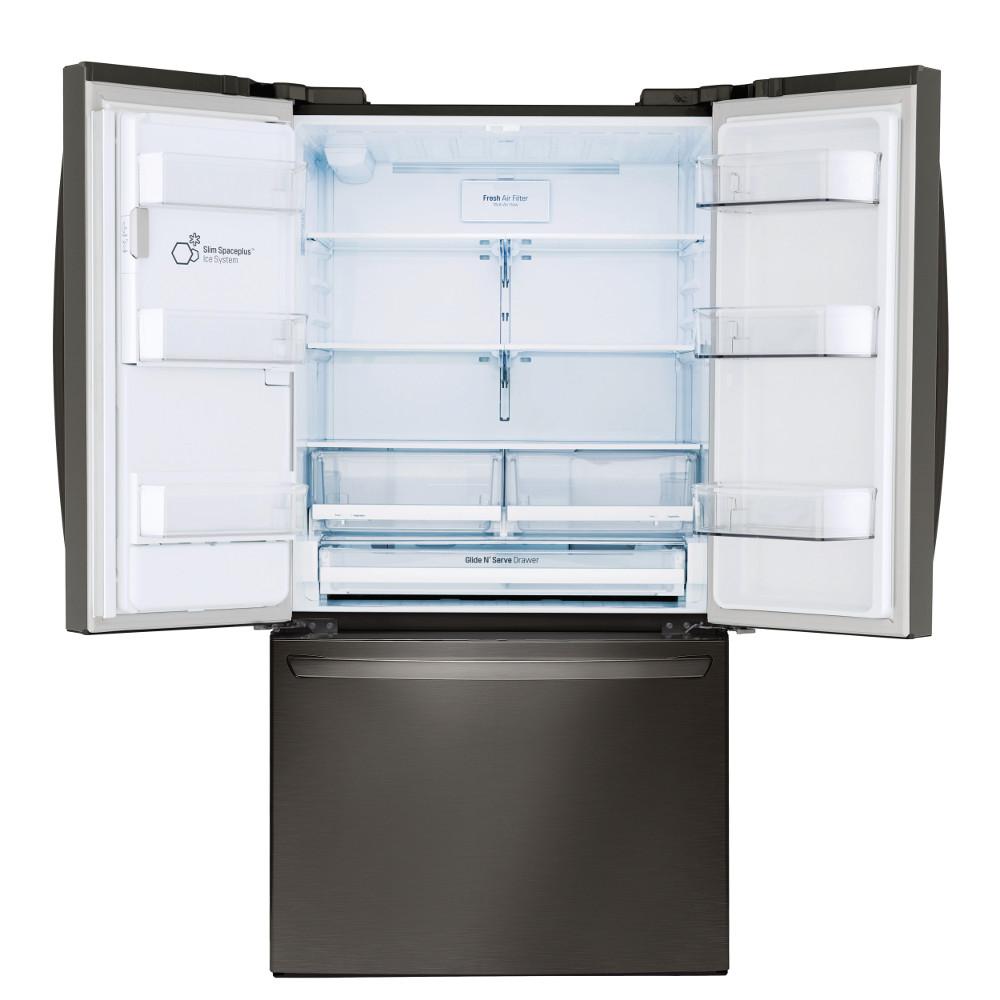
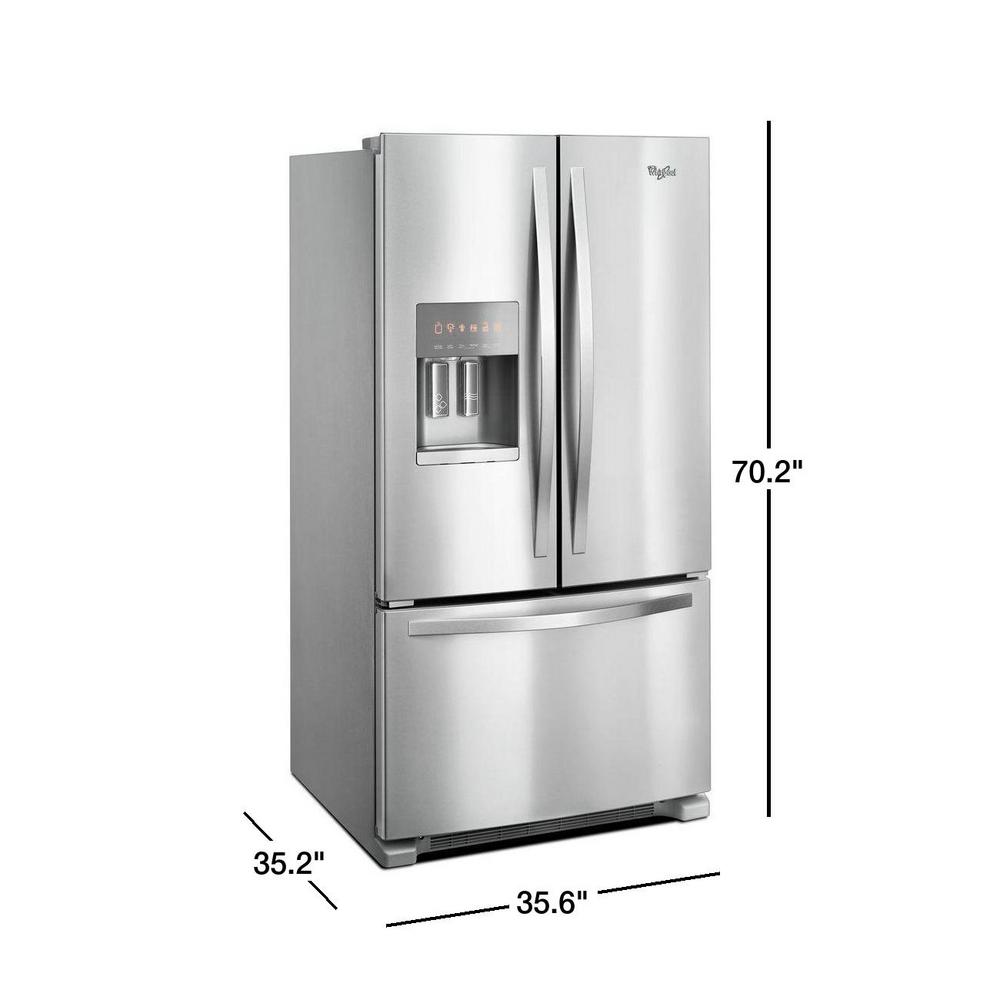
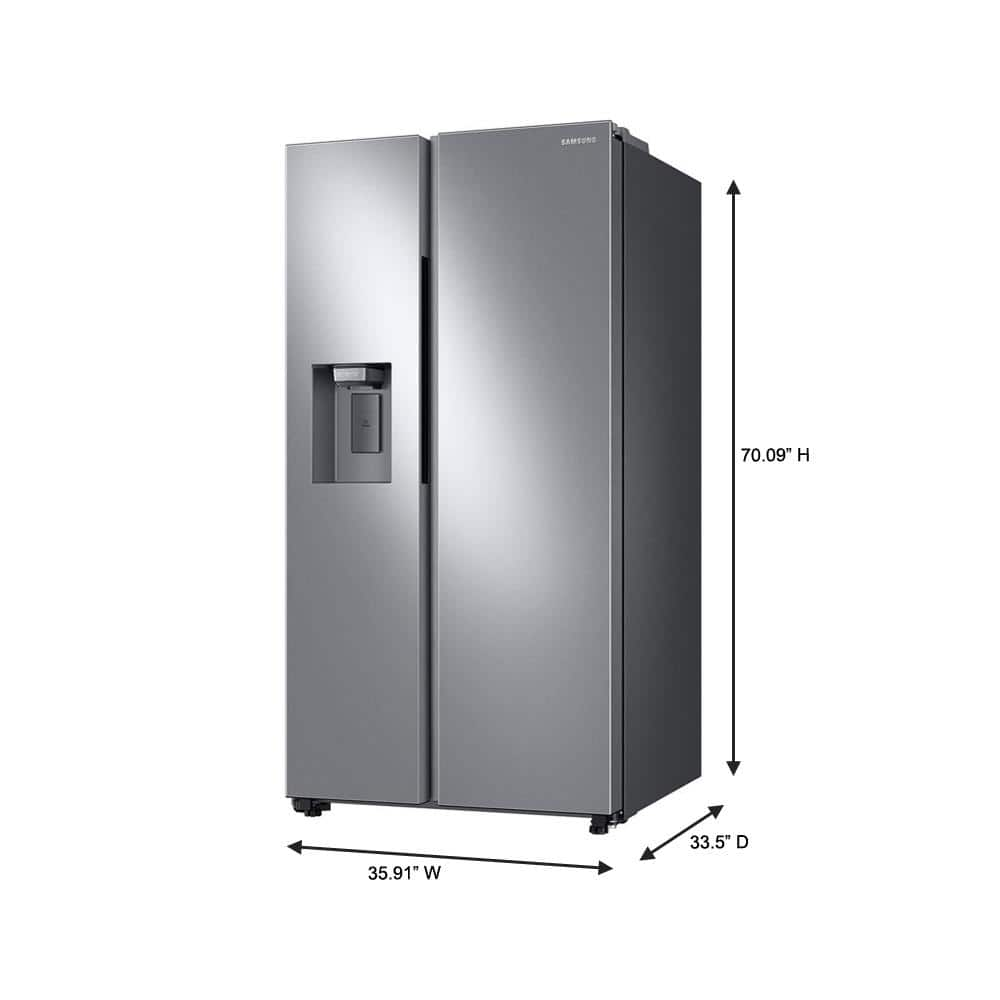
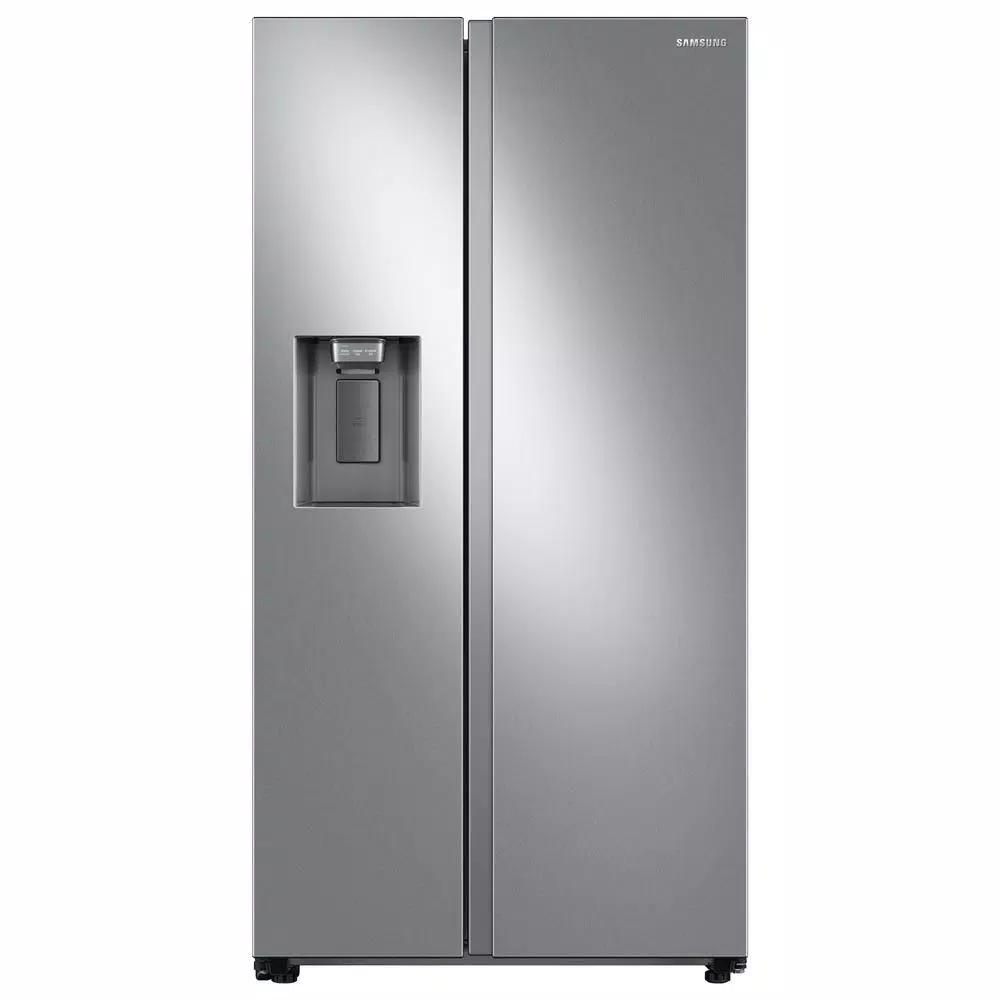
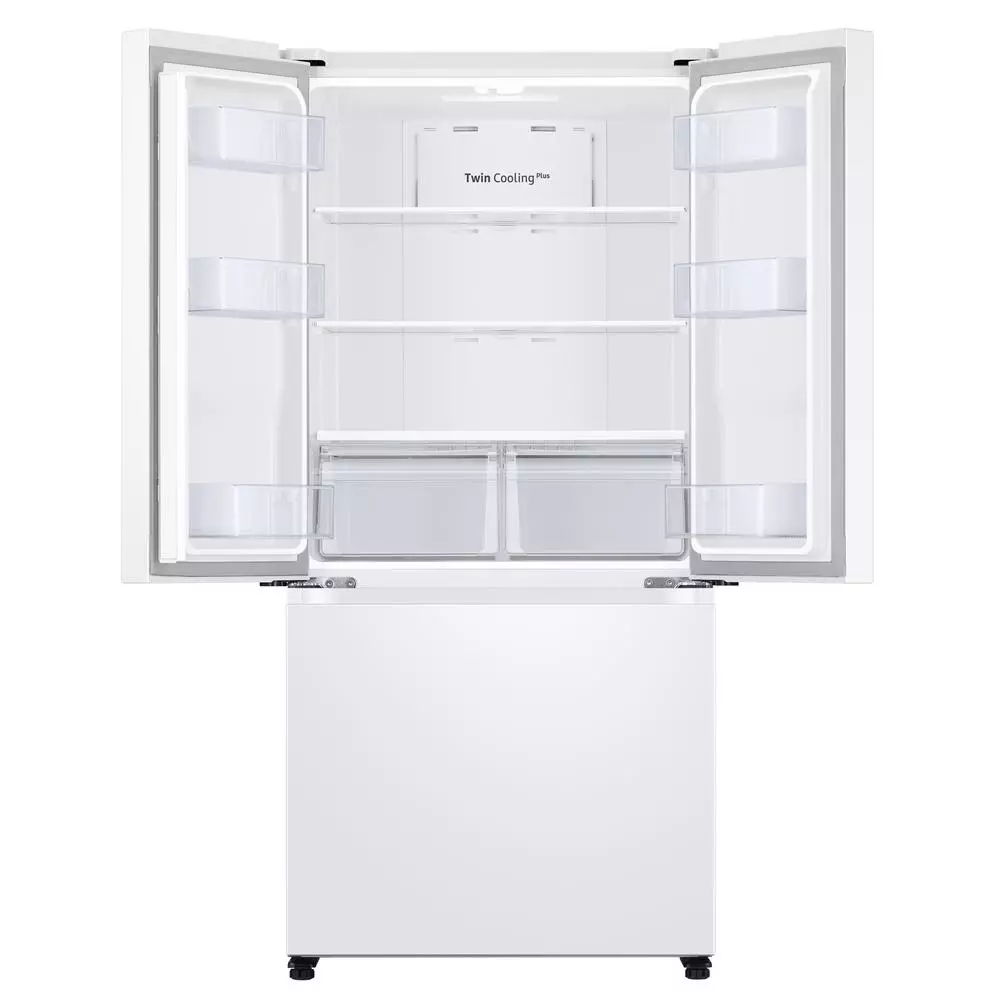
by Mikey
It’s been about 8 months ago we love the size in side of it I like the ice tray in the bottom of the freezer
by Texas
Pros about this refrigerator: love that it has two ice makers. Smaller than my last refrigerator, but the configuration allows for plenty of room. It’s very quiet. The cubes from the door are smaller than the ones in the freezer but are a perfect size. Which leads to the only con—the left door which houses the top ice maker is very heavy and has a tendency to slam shut. Also, not sure what the purpose of wifi is, but I’m sure some people might use it.
by Ima
I had been thinking about replacing our side by side refrigerator for a long time as I found it very difficult to find items in it, particularly on lower shelves toward the back. When I finally convinced my husband to look for a new replacement refrigerator, we began our research on different models. After weighing the pros and cons of many models out there, we decided on the LG French Door Model LFXS26973S. We absolutely love all of its features, the amount of room on the shelves, the configuration of shelves on the doors, even down to the size of the ice cubes! And we love the extra ice bin in the bottom pull-out drawer. We are extremely happy all the way around with this wonderful refrigerator! Thank you so much LG!!!
by Tony
We remodeled our kitchen and it fits perfectly and looks perfect.
by Matt
Gorgeous! Lots of room inside. Only thing is the vegetable drawers are smaller than I’d like. Overall a very nice appliance. I would definitely recommend. Elevates my kitchen to another level.
by Rick
I love the look and features of this refrigerator I’m also happy about how spacious it feels.
by James
Excellent fridge with high marks and easy recommendation. French doors and simple design make this fridge easy to use and large capacity. Dual ice option and easy clean external water supply made it even better. The in door ice machine is flat and not too bulky so you don’t lose fridge space like other models. That’s the beauty of ThinQ. The fridge alarms you when the door is open and can link to your phone also. We love this fridge! Covid made for slower delivery time by a month but it was well worth the wait. I highly recommend this fridge! Enjoy!
by Glade
The Frig was purchased a month ago, and we are extremely happy we chose the LG. Its functions are suited for our needs perfectly, its size is exactly what we needed. And the cost was fair.
by Bill
Our thirteen year old LG made some groaning noises and then took its last breath. Went on the HD website around the end of June and chose this unit based on manufacturer and dimensions . Ordered it and bought a small magic chef to get through as delivery was not going to happen until 30 days later. You know that fridge came exactly the day they said it would. I figured two days before we would get a call to say it was delayed, nope. I was impressed. The delivery was excellent. They guys did a great job wrestling out the old and bringing in the new. The LG works well. Very quiet and a competent ice maker. There are a few things I might have preferred with the drawer layout but I will adapt. And yes no fingerprints on the stainless. Recommend this refrigerator.